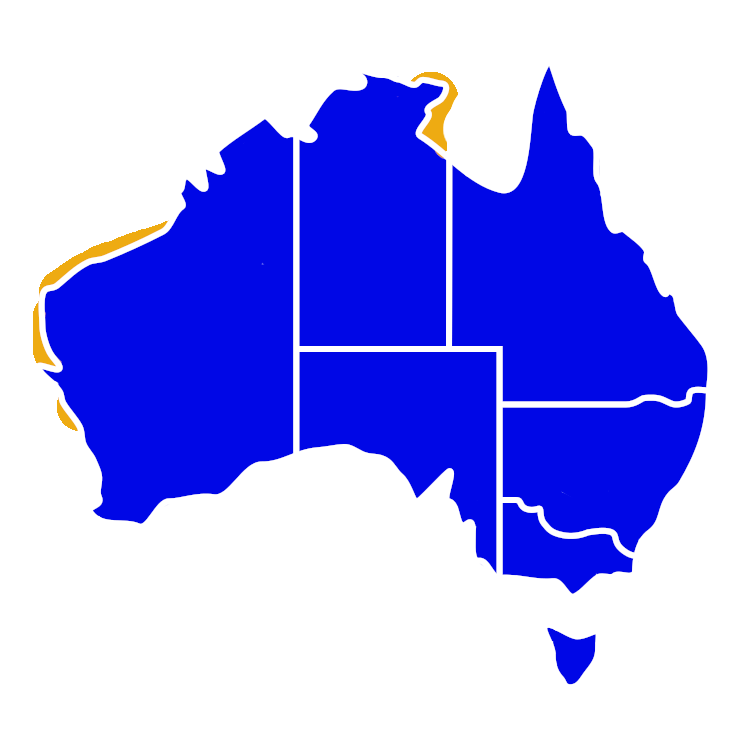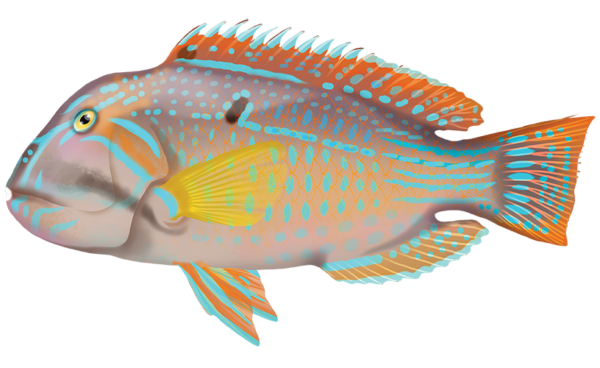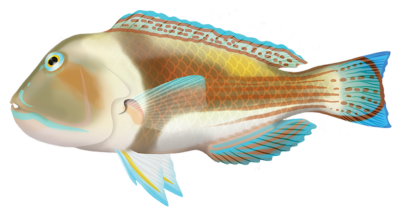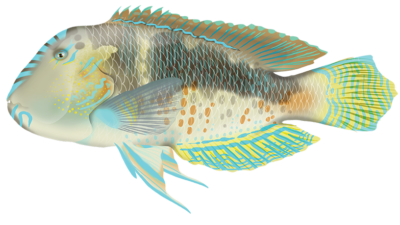Quick Facts
Distribution

Interesting Info
- The Blue-spotted Tuskfish is mainly found in the marine waters of Western Australia and the Northern Territory, from the North West Cape in WA, around the tropical north and up to the Gulf of Carpentaria in the NT. The distribution range includes both coastal and offshore reefs.
- They are is a colourful fish, marked by a pale greenish-grey body covered in brilliant blue spots. They also possess a prominent canine tooth at the back of each side of the lower jaw, which is what gives them the name “Tuskfish.”
- Blue-spotted Tuskfish are carnivorous, feeding mostly on invertebrates such as crustaceans and molluscs, and occasionally fish. They use their tusk-like teeth to crack open shells and consume the prey inside.
- They are known for their fascinating feeding behaviour. These fish pick up clams or sea urchins in their mouths, swim to a suitable rock, and then throw the prey against it to break it open.
- Blue-spotted Tuskfish typically spawn during Australia’s warmer months, from October to February, with males often exhibiting vibrant coloration and courtship displays to attract females. Their mating system is presumed to be polygynous, where one male mates with multiple females, and the fertilisation process is typically external. After hatching, the larvae drift in open waters before eventually settling on reefs as juveniles.
- They estimated lifespan is up to 10 years.
Species Interaction
Recreational Fishing, Snorkeling & Diving
Blue-spotted Tuskfish are considered to be an enjoyable and challenging species for fishing. They are strong and robust fighters when hooked, often darting back into the reef or underwater structures to evade capture. They are quite engaging to watch for snorkelers and divers due to their active foraging behaviour and vibrant colours. They can often be seen during daytime hours, busily searching for food along the reef.
Scientific Classification
Kingdom: Animalia
Phylum: Chordata
Class: Actinopterygii
Order: Perciformes
Family: Labridae
Genus: Choerodon
Species: Choerodon Cauteroma
Conservation Status
The Blue-spotted Tuskfish has not been evaluated by the IUCN. It is also not listed by the Department of Agriculture, Water and the Environment in Australia, suggesting that it’s not currently considered threatened or endangered.
Fish Taste Quality
Blue-spotted Tuskfish is highly valued for its firm, white flesh that offers a sweet and mild taste, making it versatile for various culinary preparations and a healthy choice due to its high protein and omega-3 fatty acid content.
Taste Rating: 4/5
How to catch
Blue-spotted Tuskfish
Catch Difficulty: Intermediate
Tackle: Running Sinker Rig
Bait: Crab, Fresh cut flesh baits, Pilchards, Prawns, Squid, Worms
Technique: Keep bait close to the reef/structure
Popularity: Targeted
Recreational Viewing
- Snorkeling & Scuba
Finding: Intermediate
Temperament: Peaceful
Location: Outer Reef, Lagoon
Danger: None





